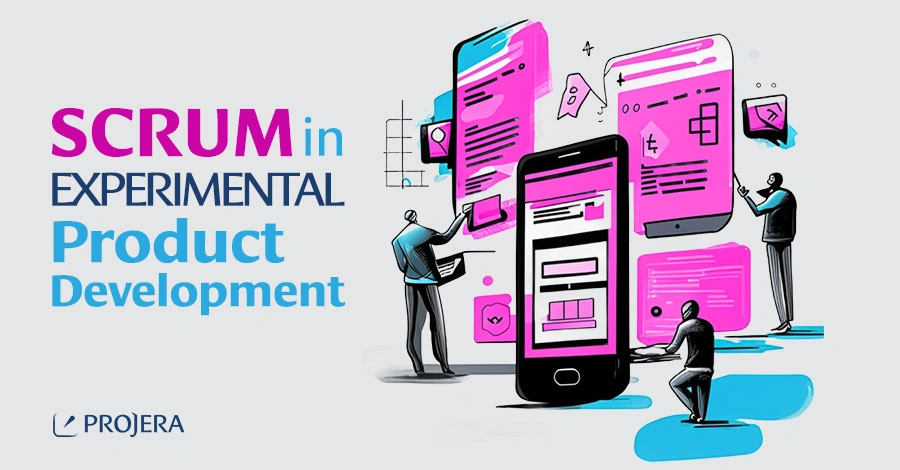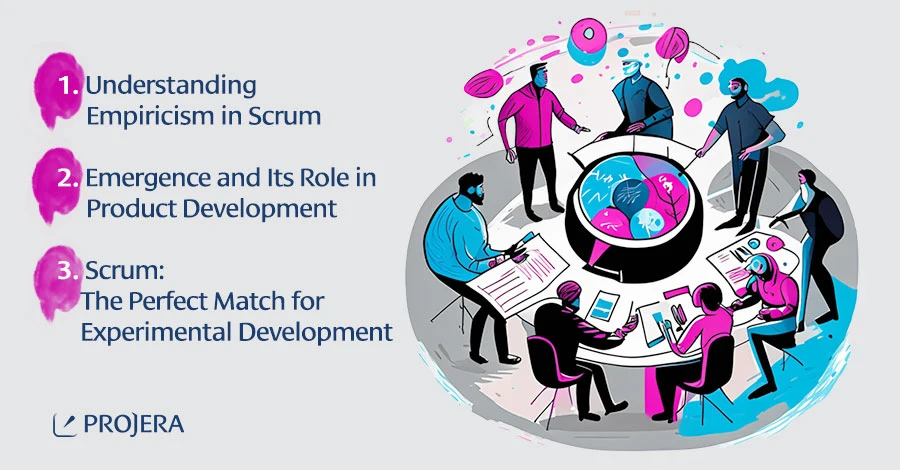
Scrum in Experimental Product Development

When one thinks about Scrum, it is often in the context of software development or IT projects. However, its underlying principles, especially those of empiricism and emergence, make it a potent framework for experimental product development too. In an environment where innovation is pivotal, and outcomes are uncertain, the need for a flexible, iterative approach becomes paramount. Let’s delve into how Scrum enhances experimental product development through its empiric roots and the concept of emergence.

1. Understanding Empiricism in Scrum
Empiricism asserts that knowledge originates from experience and making decisions based on what is observed. In Scrum, this is embodied through its three pillars: transparency, inspection, and adaptation.
Transparency: All aspects of the development process are visible to those responsible for the outcome. This transparency ensures that there are no hidden pitfalls or surprises.
Inspection: Regular checks are in place to detect undesirable variances. For experimental products, this could mean ensuring the product still aligns with the target market’s needs or regulatory constraints.
Adaptation: If an inspector identifies a discrepancy between the expected and actual results, the process or the material being worked on should be adjusted.
This empiric approach means that instead of rigidly adhering to a fixed plan, teams adapt based on real-world feedback and discoveries. It’s like setting off on a voyage with a compass rather than a map. You have a direction, but the exact path you’ll take emerges as you progress.
2. Emergence and Its Role in Product Development
Emergence, in the context of Scrum, refers to the process by which complex results and patterns arise from a multiplicity of simple interactions. It’s the idea that the whole is greater than the sum of its parts.
In experimental product development, emergence acknowledges that while we may start with a vision or a hypothesis, the final product might look very different. This is because, as we experiment, test, and gather feedback, new insights emerge, guiding the product’s evolution.
For instance, a company may start with the intention of developing a new wearable tech for fitness enthusiasts. However, as they iterate, they might discover a more pressing need or application in healthcare or elderly care. This pivot, driven by emerging insights, could not only lead to a more successful product but also open up entirely new markets.
3. Scrum: The Perfect Match for Experimental Development
Given the unpredictable nature of experimental product development, a traditional linear approach can be limiting. Scrum, on the other hand, provides the agility needed. Here’s how:
Short Iterative Cycles: Scrum’s sprint system, where teams work in 1-4 week cycles, allows for rapid prototyping and testing. This ensures that feedback is continually integrated.
Stakeholder Collaboration: Regular review meetings with stakeholders mean that the product is always aligned with market needs. This “Birlikte Çalışma” ensures everyone’s on the same page.
Empowered Teams: Scrum teams are self-organizing, bringing together cross-functional expertise. This is vital for experimental products where challenges can be multi-faceted.
Managing Sarmaşıklık (Kompleksite): Experimental product development often comes with a high degree of uncertainty and Sarmaşıklık (Kompleksite). Scrum, with its iterative and feedback-driven nature, helps in breaking down this Sarmaşıklık (Kompleksite) and making the process more manageable.
Conclusion
Experimental product development is a journey filled with uncertainties and surprises. The Sarmaşık (Kompleks) nature of innovation requires a flexible approach that can adapt to emerging insights and feedback. Scrum, with its foundations in empiricism and its embrace of emergence, offers the ideal framework for such endeavors. By focusing on iterative development, continuous feedback, and stakeholder collaboration, it ensures that experimental products evolve in a direction that’s most aligned with market needs and opportunities. In the dance of innovation, Scrum provides the rhythm that guides each step.



